
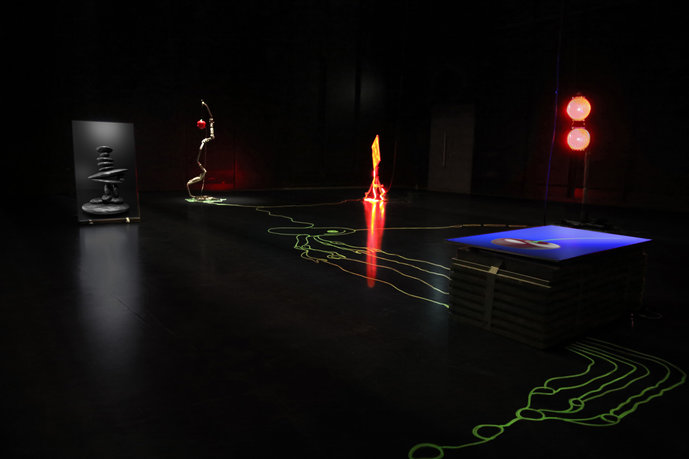
Installation overview (© Mathias Lempart)

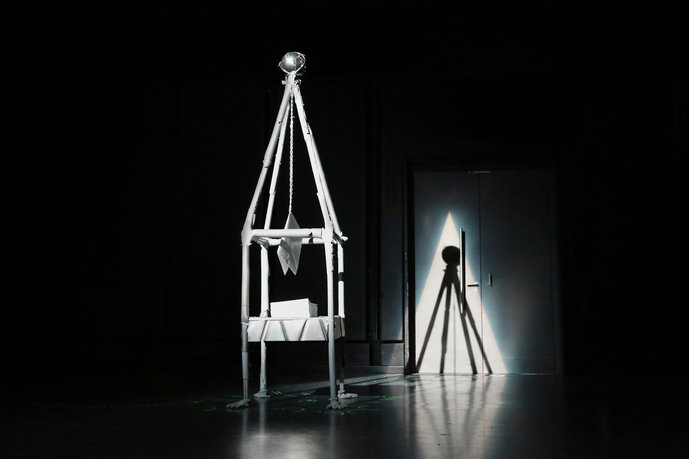
Hauke (© Mathias Lempart)

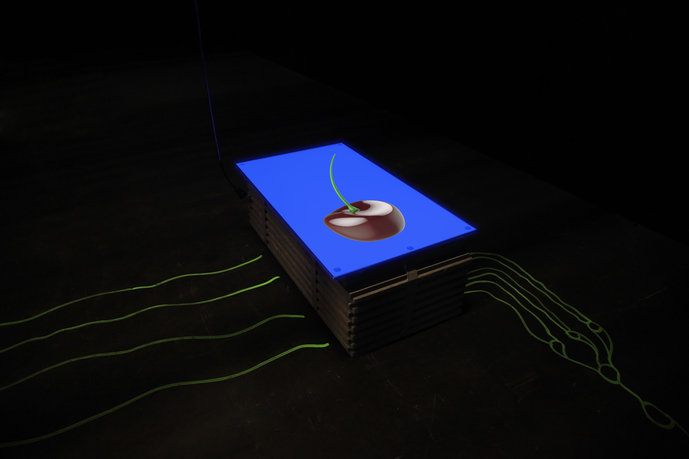
Sophia (© Mathias Lempart)

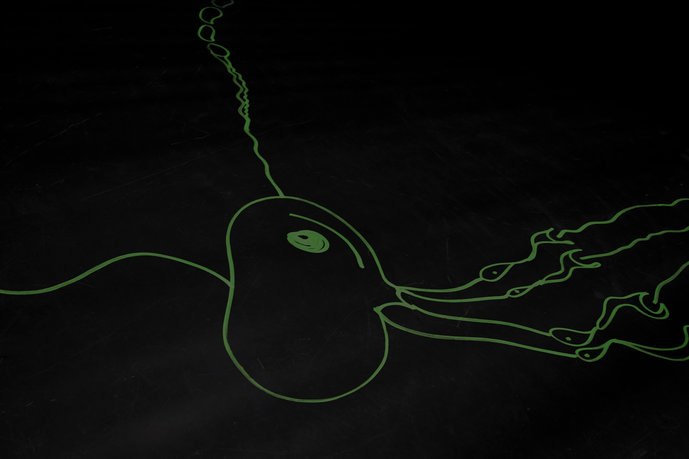
Floor detail (© Mathias Lempart)

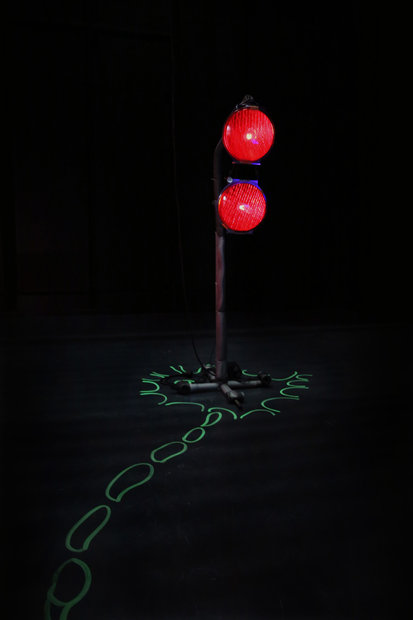
Severin (© Mathias Lempart)

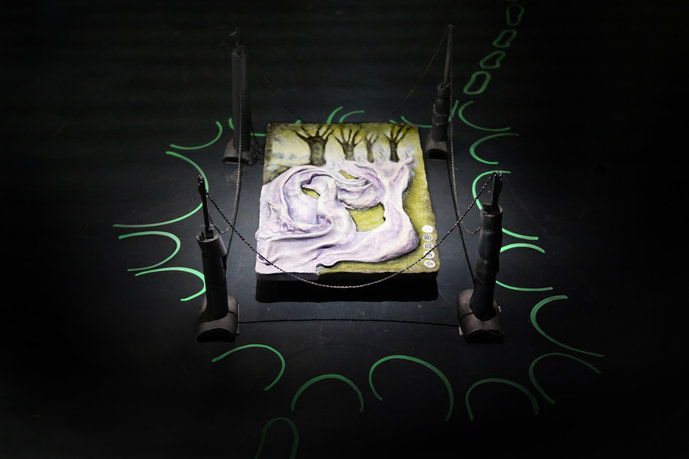
Xavier (© Mathias Lempart)

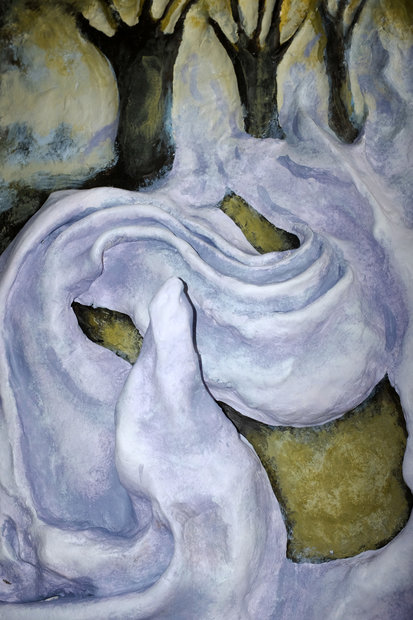
Xavier (Detail) (© Mathias Lempart)

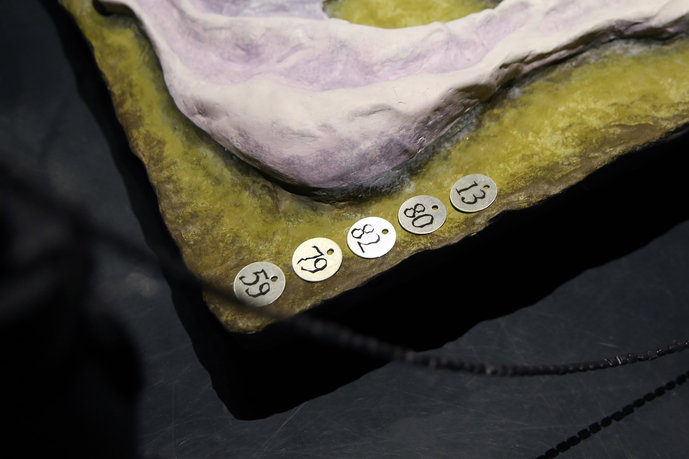
Xavier (Detail) (© Mathias Lempart)

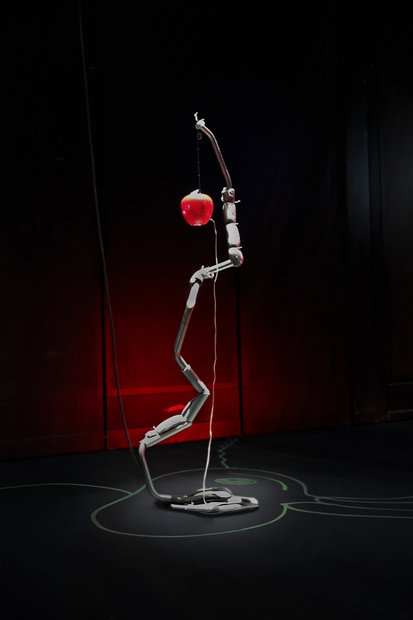
Michelle (© Mathias Lempart)

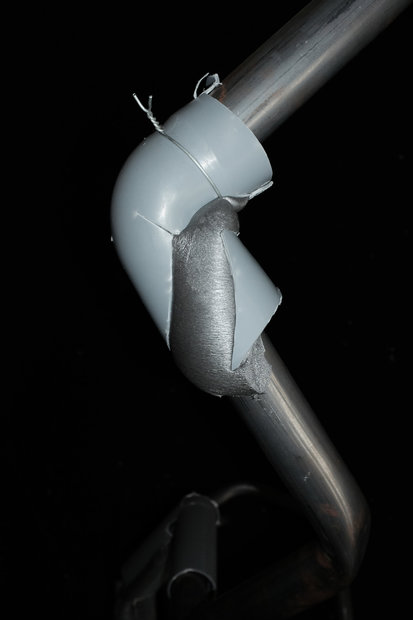
Michelle (Detail) (© Mathias Lempart)


Sören (© Mathias Lempart)

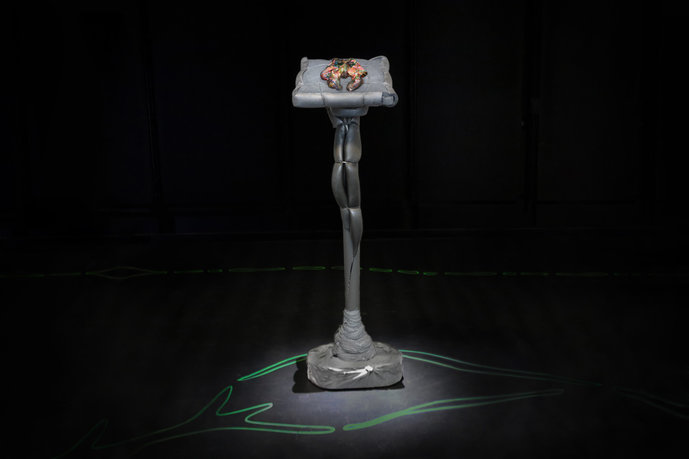
Diane (© Mathias Lempart)

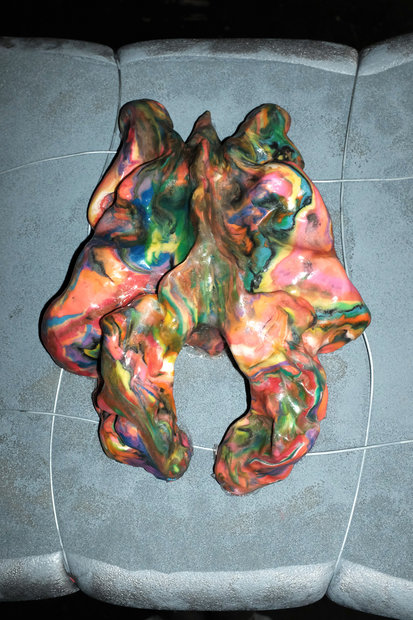
Diane (Detail) (© Mathias Lempart)

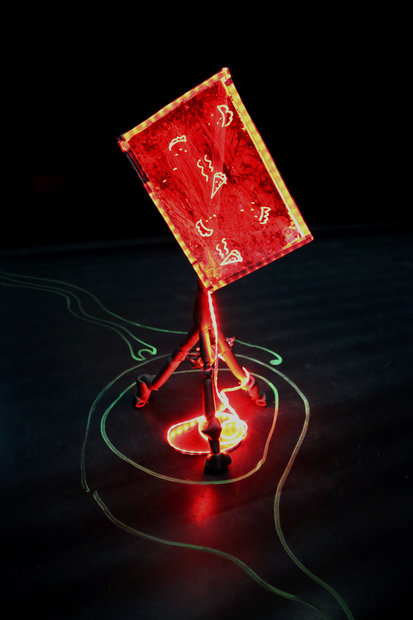
Paula (© Mathias Lempart)
Are we able to represent human feelings? How might we communicate them and ultimately, turn them into a visual experience? In regards to the representation and transmission of subjective perception, popular conceptions of an ostensibly objective design practice quickly reach their limit. The immense interest in the topic, as in the transgression of prevailing norms of representation, brings to mind the current hype for immersive production, where an immediate experience is created by means of physical and psychological immersion. Mathias Lempart uses the example of migraine in order to test the ways one might visualize pain. The exhibition is the final step in an extensive research and production process that spanned an entire year. His research cleverly incorporates his findings and expeditions around the archives and museum displays of the Welcome Collection, London (UK), Teylers Museum, Haarlem (NL) and the Museum of Jurassic Technology, Los Angeles (USA). The resulting “buildings” read as characters, or strange anthropomorphic structures that have been animated through audio and video, and in the case of Severin even provokes the viewer to activate the sound sensitive red traffic light, so that many viewers could be seen clapping and even screaming before the work. These animated bodies are rooted in real accounts of five patients who suffer from severe migraine. There is an apparent subversion of exhibition design, museum codes, and symbols—while Lempart might appear to be celebrating the provisional or naïve form, he seems particularly astute at activating the complex data he obtained from his migraine interviewees and his own experience.
(Text by Anna Schanowski)
During my early twenties I was afflicted with migraine attacks. It felt like a nightmare that would numb my senses for days and aggressively disrupt my university routines. After six years, thanks to a minor yet constant dose of beta-blockers, the spook was finally over.
According to the German Society for Neurology, one person out of ten suffers from migraine. Applied to the current world population, this amounts to 758 million individuals—twice the population of the United States. Despite the high number of victims, it seems there are hardly any visualizations that deal with the complexity of this illness. Typically discarded as the “little aches and pains of women,” representations of migraine in our society are limited to stock photos of middle-aged women holding their head and grimacing painfully in front of a bolt of lightning.
Rather than highlighting the limitations of medical imagery in the tradition of critical design, this project seeks to communicate alternative visualizations of migraine. From the beginning, I was interested in revealing a process that allows me to experiment with a range of unfamiliar materials. I worked closely with medical students from the Technical University of Dresden, who provided me with analytical material on the subject and introduced me to the special terminologies within the latest neurological research. Expressions like “the architecture of the brain,” “circuits,” and “wiring” inspired me to start “Proto Migraine Buildings” with a research into building materials.
The idea to translate medical content into a spatial setting also originated from the common use of analogies within the field of neurology, linking human anatomy and architecture. From this first phase of my research, I then developed a set of prototypes and experimental constructions, whose process-based characters mirrored the manual aspects of building and construction.
I conducted interviews with five migraine patients, all varying in age and sex, who introduced me to their own idiosyncratic imagery e.g. “pulsating cherries,” “mouldy nut,” “red”—I am curious about the figurative associations with which the symptoms of this specific illness are visualized. Surprisingly, the visual worlds described by my five interview partners do not compete with each other. In fact, they are so similar, that they even complement each other and in my mind collapse into one shared image.
I took this as a starting point, translating the described images of migraine into material form with a particular emphasis on the literal accuracy of the analogies. I deliberately decided against typically modernist principles, like an aspiration for objectivity and a cool, rational aesthetic. Instead, I decided to include the polyphony of my interview material and immediate emotional reactions into the design process, in order to more directly communicate the patients’ feelings of fragility and vulnerability. Translating the interviewees‘ visual worlds was an inherently playful and intuitive process—a subjective approach that hones the almost impossible task of translating feelings into language.
“Proto Migraine Buildings” proposes an alternative vocabulary around migraine in the form of humorous visualizations of pain-induced imagery. In the allusions to art historical images used by my interview partners — for instance “The Scream” by Edvard Munch — I saw an opportunity to dissolve the common and frequently static stock images of medical discourse and replace them with spatial representations in an exhibition context that approach the topic from an archival or art historical perspective. Furthermore, tropes from animated films such as the anthropomorphized furniture in Disney’s “Beauty and the Beast” (1991) also served as a major visual influence.
During my research I visited institutions in the Netherlands, England, and California, to study exhibition strategies for visualizing scientific phenomena and artifacts. My interest is in the fictionalization (through display design) of seemingly objective and scientific phenomena. For example, the Teylers Museum in Haarlem displays the peak of the Mont Blanc in a glass cabinet from 1802 next to a mammoth skull, which is held together by a set of bulky rods. “Proto Migraine Buildings” stages a similar eclectic collection of curious objects on oversized display-constructs. The displays emphasize the individual objects I crafted after the interviews, infusing these colonial display tropes with absurdity through an exaggerated and inflated self-importance.
Mirroring the human nervous system, the exhibition “Proto Migraine Buildings” is a multi-unit network consisting of materialized worlds of pain and humanized display-constructions. The line between artifact and display is completely blurred through the incorporation of motion- and sound sensitive installation mechanisms. The distinction between exhibition and audience is also called into question.
Contact:
www.mathiaslempart.com
moc.liamg(ta)trapmelsaihtam
Exhibiton Dates: October 23-31, 2018
Exhibition Venue: GROSSES STUDIO
Tutors: Prof. Rebecca Stephany, Prof. Sereina Rothenberger